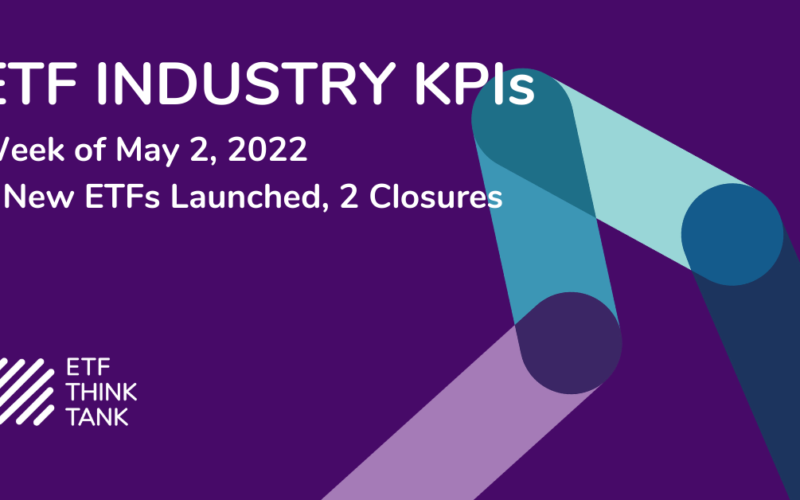Market volatility is high, inflation is still at multi-decade highs and who knows if the Fed is going to be able to contain it without risking recession. Are valuations and fundamentals starting to make a comeback? Perhaps. Jim Masturzo is the CIO of Multi Asset Strategies at Research Affiliates and he joins the ETF Think Tank to discuss the state of the world today.
What does Masturzo think of last week’s action? There was a lot of talk of a 75-basis point hike from the Fed and the markets started to price that in. Powell said it was never considered and stuck to 50 basis points. There are a lot of dip buyers ready to take advantage of these situations. The next day it seemed like people realized that fundamentals are still challenged. Inflation is high. GDP turned negative last quarter. The stagflation argument is starting to enter the mix. For long-term investors, the message is that they should not panic.
Does the current environment prove that fundamentals still matter? Masturzo believes that people never fully took their eyes off of it, but they didn’t really care as much during the bull market. Volatility finally kicked in and things changed. We’re starting to see the return of value stocks, low volatility and other defensive assets and that could continue as long as current conditions persist.
Masturzo was asked if stagflation could be here by 2023. He thinks the answer could be yes. He notes that CPI measures tend to have longer tails and we’re going to see high inflation in the coming quarters. A lot of the current inflation is caused by the supply side, not the demand side. While that tends to right itself over time, it can take longer to work itself out. Could we sustain something like 5% inflation for an extended time? It’s possible, but that will lead to more volatility in the markets and the economy. That part is likely not sustainable.
It is important to remember that this is a global economy and conditions in Europe and elsewhere must be considered. The one area to watch could be emerging markets. Countries, such as India, need to buy oil with dollars and those dollars are becoming more expensive. There are opportunities for cracks in the system. The issues in emerging markets could quickly spread to other areas of the world and cause trouble. On the other hand, this could end up looking like a textbook recession. Everybody right now thinks it’s 2001 or 2008. It’s possible this is just a normal recession and we’re simply pulling back from elevated levels.
This environment can be especially challenging for financial advisors who need to calm clients and present an optimistic view. If inflation starts trending down, the market will anticipate a positive trend. If inflation starts looking like it’s under control, risk assets could start turning higher again. If inflation comes back to a reasonable level and the economy is able to withstand current pressures and continue to grow, it’s quite possible that stocks could move higher.
The biggest risk is what happens if the Fed can’t get inflation under control. The market is anticipating we hit a 3% Fed Funds rate by year-end, but I don’t see that happening. You can only raise interest rates so far when you have a debt-to-GDP ratio of 200%. If inflation stays hot for a prolonged period of time, I don’t know how they fight it without stressing the entire system. A lot of this is supply-induced, but if demand stays hot, Masturzo says he doesn’t know where this ends up.
What does Masturzo think will happen over the next few years? Rate hikes are pretty much what everyone is expecting. We are not like the Bank of Japan where they’re buying everything, but he thinks the Fed balance sheet is more likely than not to exceed $10 trillion. There is not the political capital to get the Fed Funds rate, the Fed balance sheet and the debt-to-GDP ratio back to normal. The market will likely break inflation before the Fed does. Sometimes, you have to clear the deck first.
Disclosure
All investments involve risk, including possible loss of principal.
The material provided here is for informational purposes only and should not be considered an individualized recommendation or personalized investment advice. The investment strategies mentioned here may not be suitable for everyone. Each investor needs to review an investment strategy for his or her own particular situation before making any investment decision.
All expressions of opinion are subject to change without notice in reaction to shifting market conditions. Data contained herein from third party providers is obtained from what are considered reliable sources. However, its accuracy, completeness or reliability cannot be guaranteed.
Examples provided are for illustrative purposes only and not intended to be reflective of results you can expect to achieve.
The value of investments and the income from them can go down as well as up and investors may not get back the amounts originally invested, and can be affected by changes in interest rates, in exchange rates, general market conditions, political, social and economic developments and other variable factors. Investment involves risks including but not limited to, possible delays in payments and loss of income or capital. Neither Toroso nor any of its affiliates guarantees any rate of return or the return of capital invested. This commentary material is available for informational purposes only and nothing herein constitutes an offer to sell or a solicitation of an offer to buy any security and nothing herein should be construed as such. All investment strategies and investments involve risk of loss, including the possible loss of all amounts invested, and nothing herein should be construed as a guarantee of any specific outcome or profit. While we have gathered the information presented herein from sources that we believe to be reliable, we cannot guarantee the accuracy or completeness of the information presented and the information presented should not be relied upon as such. Any opinions expressed herein are our opinions and are current only as of the date of distribution, and are subject to change without notice. We disclaim any obligation to provide revised opinions in the event of changed circumstances.
The information in this material is confidential and proprietary and may not be used other than by the intended user. Neither Toroso or its affiliates or any of their officers or employees of Toroso accepts any liability whatsoever for any loss arising from any use of this material or its contents. This material may not be reproduced, distributed or published without prior written permission from Toroso. Distribution of this material may be restricted in certain jurisdictions. Any persons coming into possession of this material should seek advice for details of and observe such restrictions (if any).












